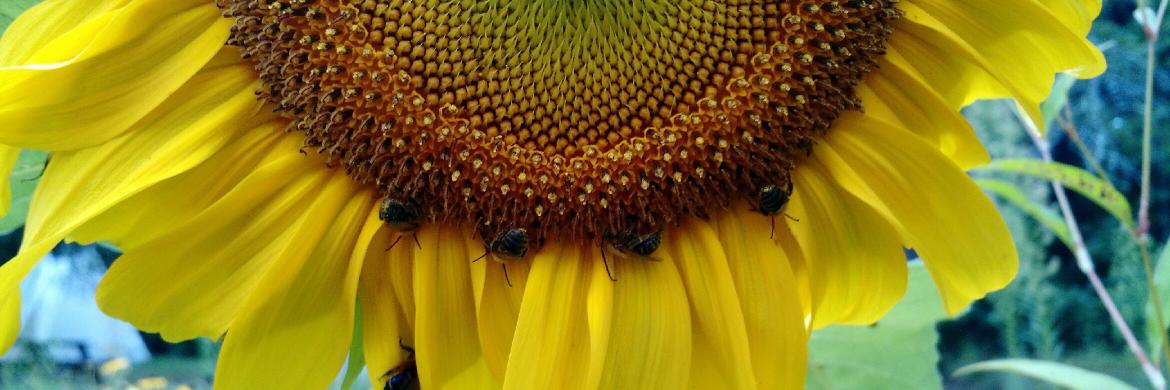
Richard J. Knecht
@rjknecht1
Postdoctoral Fellow @UMich @UMichEEB @UMichPaleo Research Associate @Harvard @MCZHarvard @HarvardOEB @turkanabasin Fossils, footprints, and forgotten worlds.
#A fossil once misidentified as a caterpillar is now recognized as the oldest known nonmarine lobopodian, reshaping understanding of early animal evolution and freshwater ecosystems. @HarvardResearch @CommsBio doi.org/g9t227 phys.org/news/2025-07-f…
Fantastic video on our new lobopodian discovery! youtube.com/watch?v=hXyg9Q…
In fact, Palaeocampa's spines were not its only defence - the papilale that lined the animals dorsum (the upper surface) are sclerotized, with small pores at their centre which housed small setae. These armoured papillae gave its back a rough, pebbly appearance.
Meet Palaeocampa anthrax, a newly discovered Carboniferous lobopodian, and 150 year old mystery fossil! Palaeocampa is an exceptional lobopodian - it lived in rivers and lakes, bristled with thousands of poisonous spines, and more. 🧵 Open access: nature.com/articles/s4200…
Before the dinosaurs... before flowering plants or mammals.... What was happening in ecosystems 320 million years ago? Jake Benner is helping fill in what we know about our planet's ancient plants and animals. You can read the new paper here: nature.com/articles/s4146…
Palaeocampa anthrax, a fossil worm first described from Carboniferous rocks in 1865 as a caterpillar, is redescribed as a freshwater aysheaiid lobopodian with a unique sclerite armature and probable chemical defences, according to a paper in @CommsBio. go.nature.com/3TSRrbP
Misidentified for over a century, Palaeocampa anthrax is now believed to have lived in freshwater—challenging the idea that Paleozoic lobopodians were strictly marine. sci.news/paleontology/p… #fossils #paleontology
Palaeocampa lived among freshwater fish and sharks like xenacanths, small freshwater arthropods like the bizarre horseshoe crab Alanops, in lakes and rivers among the thriving coal forests of the Carboniferous. There is no other lobopodian quite like it.
Excited to say that there will be a groundbreaking new lobopodian discovery will be published very soon, and I think it will change what we think we know about Paleozoic ecosystems. Stay tuned.
#FossilFriday For our first social media posts, we highlight the iconic MB.Av.1010: a complete fossil of Archaeopteryx siemensii; a Late Jurassic species thought to be transitional between theropod dinosaurs & birds. On display at the Berlin Natural History Museum.
The MCZ was awarded a new digitization grant and we have two new positions to fill! We are looking for curatorial assistants (one full-time, one part-time) to rehouse and digitize our invertebrate microscope slide collections. bit.ly/48dxQJJ and bit.ly/48dwqy
Thrilled to announce that I will be starting as an Assistant Professor and Curator at the University of Michigan in Jan 2025. My time will be split between @UMichEEB and @UMichPaleo I will soon be looking for graduate students and postdocs. Please spread the word! 📣📣
Record of life in the Carboniferous Period is limited to low-lying wetlands 315-310 million years old. Knecht et al. present an older lagerstätte preserving a diverse ecosystem of vertebrates, invertebrates, plants, & plant-insect interactions. @rjknecht1 nature.com/articles/s4146…
Early Pennsylvanian Lagerstätte reveals a diverse ecosystem on a subhumid, alluvial fan | nature communications nature.com/articles/s4146…
New fossil ants, insight into ant faunal turnover, and the persistence of the "platonic ant body plan"! Our paper on the youngest-yet stem ants from the Cretaceous, preserved in ~77 Ma North Carolina amber, is now out in Current Biology doi.org/10.1016/j.cub.…
This #FossilFriday features 2 new species of #Palaeozoic whip scorpion, the largest known species & first fossil arachnid in the Rhode Island Formation, and the smallest known thelyphonid from the Wamsutta Formation! 🦂 academic.oup.com/zoolinnean/art… @LinneanSociety @rjknecht1
Unearthing the #leaf miners of ancient times: 312-million-year-old fossil sheds light on insect #behavior and evolution @HarvardResearch doi.org/gstm69 phys.org/news/2023-10-u…
Endophytic ancestors of modern leaf miners may have evolved in the Late Carboniferous Knecht et al. @rjknecht1 @anshuswain 📖 ow.ly/sB0P50PTNYC